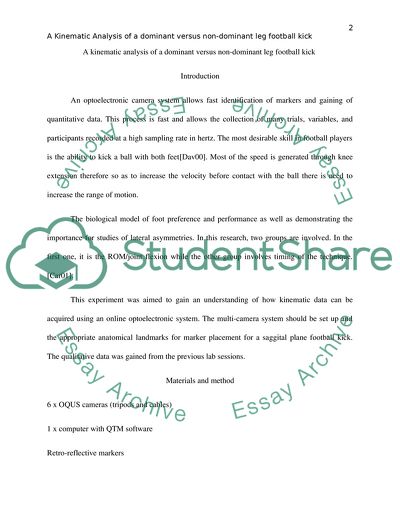Cite this document
(A Kinematic Analysis of a Dominant Versus a Non-Dominant Leg Football Lab Report, n.d.)
A Kinematic Analysis of a Dominant Versus a Non-Dominant Leg Football Lab Report. Retrieved from https://studentshare.org/sports-and-recreation/1853082-a-kinematic-analysis-of-a-dominant-versus-non-dominant-leg-football-kick
A Kinematic Analysis of a Dominant Versus a Non-Dominant Leg Football Lab Report. Retrieved from https://studentshare.org/sports-and-recreation/1853082-a-kinematic-analysis-of-a-dominant-versus-non-dominant-leg-football-kick
(A Kinematic Analysis of a Dominant Versus a Non-Dominant Leg Football Lab Report)
A Kinematic Analysis of a Dominant Versus a Non-Dominant Leg Football Lab Report. https://studentshare.org/sports-and-recreation/1853082-a-kinematic-analysis-of-a-dominant-versus-non-dominant-leg-football-kick.
A Kinematic Analysis of a Dominant Versus a Non-Dominant Leg Football Lab Report. https://studentshare.org/sports-and-recreation/1853082-a-kinematic-analysis-of-a-dominant-versus-non-dominant-leg-football-kick.
“A Kinematic Analysis of a Dominant Versus a Non-Dominant Leg Football Lab Report”. https://studentshare.org/sports-and-recreation/1853082-a-kinematic-analysis-of-a-dominant-versus-non-dominant-leg-football-kick.


